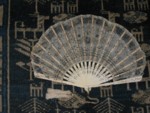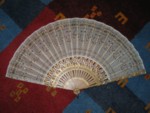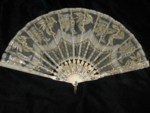
fig.5 Spangled
fan, approx. 1900
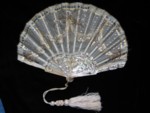
fig. 7 Ball
or court fan, Austria, approx. 1905
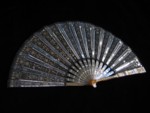
fig. 9 Black
fan with steel spangles and white background gauze, beginning 20th century
Spangled Fans (cont'd)
Almost exactly 100 years after the first "spangle hype", fashion reverts again to the glitter of former days, this time inspired by orientalism and "Art Nouveau" (Liberty). The typical 1900 version shows balloon form, as seen in figs. 7 and 8. Other spangled fans, however, are less typical, to the point that it is difficult to determine their period (see fig. 4 preceding page). This fan looks "original" but displays a small ring typical for 1900 fans. A painting by Louise Abbéma of Mme. Duvelleroy shows her with a similar fan in hand.
The first decade of the 20th century sees spangled fans in all rainbow colours. The Parisian fan maker Duvelleroy produces the most flamboyant ones, some assorted with spangled handbags (see"L'éventail miroir de la Belle Epoque", Biblio No. 65). Artists are inspired as well, An example is the Belgian architect Henry Van de Velde who designed a fan with spangles in a geometric pattern. This fan was produced in 1904 by the German fan maker Bruno Zeibig in Dresden, Germany (see Ch. Kammerl, page 244, Biblio Nor.23).
Until 1920/30, fans display spangles, but the quality decreases, the materials become cheaper (bone or wooden sticks, cotton instead of silk). Later on, spangles are no more embroidered but glued on, or replaced by cheap tinsels.
Spangled fans are a challenge for the collector as their restoration is difficult. First, some spangles are almost always missing and it is hardly possible to find vintage ones of the same style. Second, the thin silk fabric becomes easily brittle at the folds. The application of a support on the back is time and cost intensive and needs often the expert hand.
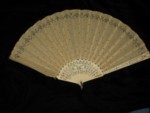
fig. 6 Crêpes
de Chine silk fan, approx. 1900
